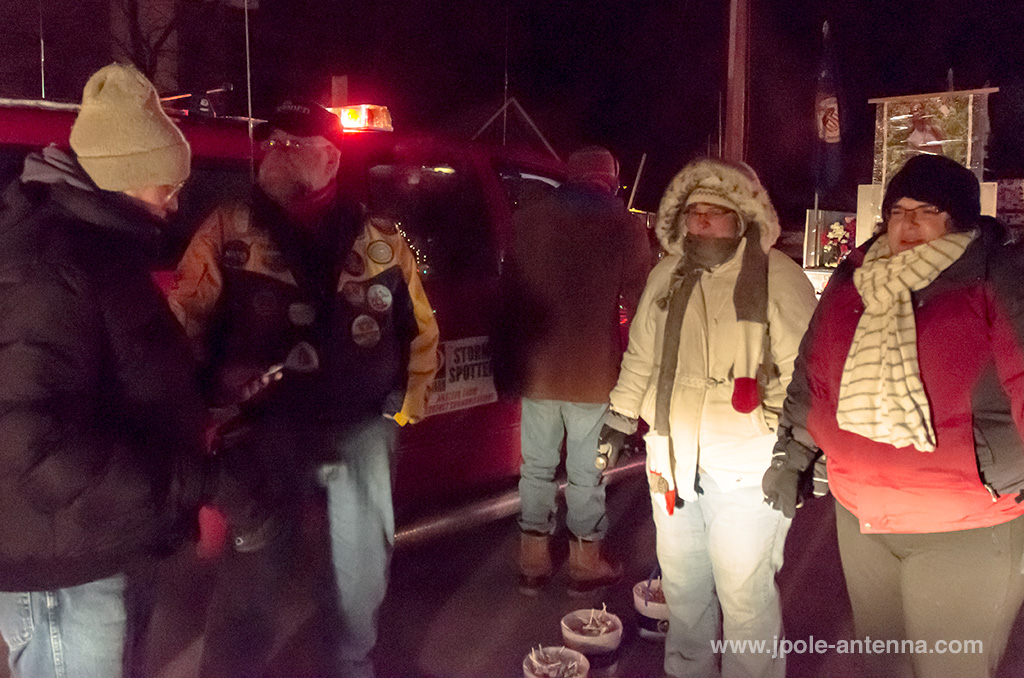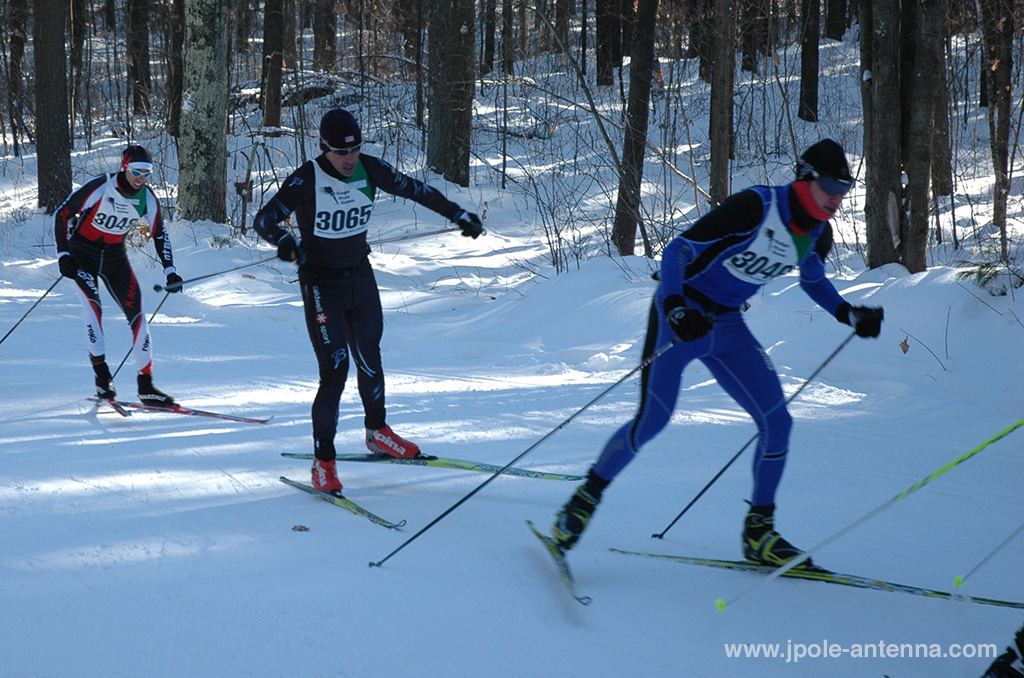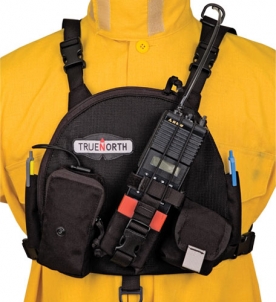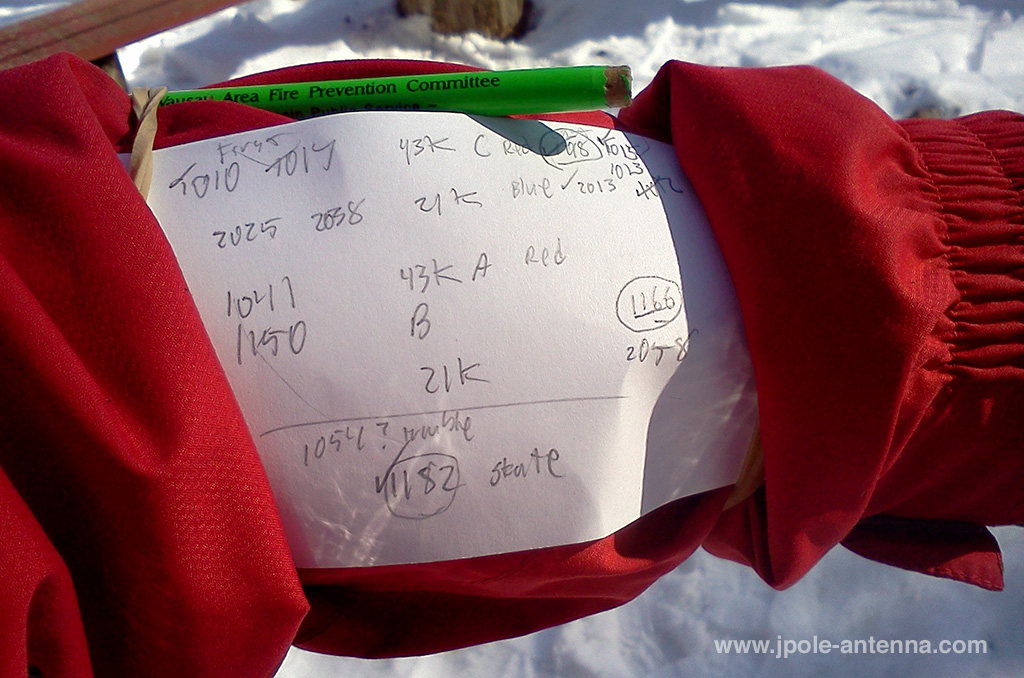This past week the Polar Vortex gripped the Upper Midwest with bone chilling temperatures and even worse wind chills. You’d think I would be used to cold like this, being an almost life resident of the State of Wisconsin (I’ll admit I lived in Minnesota a few years). So what makes this week any different than any other Wisconsin weather. Other than the hype the media created, nothing really. Yes, it gets cold in the winter, and if we want to enjoy the outdoors in the winter time, we need to prepare for cold weather.
Our amateur radio club does a few cold weather activities, providing health and welfare support for an area cross country ski race and participating in a holiday parade. The temperature and conditions could be a balmy 20 degrees, or 5 below zero and windy. Either way, we still need to be out there, because unless there is a lack of snow, the race will go on. With that in mind, [pq]here are my tips for dressing and operating your radio equipment in cold weather conditions.[/pq]
Dress for activity level and conditions
 The key for being comfortable out in the cold is to know the weather conditions and dress appropriately. If you will be moving around and active, lighter layers may be necessary. If you are going be relatively sedentary, you’ll want more and heavier layers. I prefer to have a system of several light layers built up that can be zipped and unzipped to moderate your core temperature. Utilize a three layer system and make adjustments with thickness based on conditions:
The key for being comfortable out in the cold is to know the weather conditions and dress appropriately. If you will be moving around and active, lighter layers may be necessary. If you are going be relatively sedentary, you’ll want more and heavier layers. I prefer to have a system of several light layers built up that can be zipped and unzipped to moderate your core temperature. Utilize a three layer system and make adjustments with thickness based on conditions:
Base Layer
The base layer sits closest to your body, use light to mid weight material that will wick moisture and create an insulation layer. The base should be close fitting, but not restrictive. Use wool or synthetics, remember the phrase ‘cotton kills.’ Any perspiration from activity needs to be transported away from your body core, otherwise it will chill you, no matter how warmly you are dressed.
Mid Layer
The mid layer is usually a synthetic or wool material that can be opened or closed to regulate body temperature. I like to use a fleece jacket or vest with a zipper as my mid layer.
Outer Layer
The outer layer should be insulating and wind proof. A parka or heavy jacket are ideal. If you are going to be active, stay with a lighter outer layer and build up the inner layers. If you are going to be in the snow, the outer layer should also be water resistant. snow pants and bibs will keep your bottom half warm. Some people swear by their Carharts, and the heavy quilted outerwear will keep you warm. Just remember the layers underneath also need to be wicking to keep moisture from chilling you.
Boots, Hats, Gloves and Mittens
Protect your extremities in the cold. Wear a hat and gloves or mittens that are appropriate for the conditions. If it’s sub-zero, I’ll use a fur lined hap with flaps that cover my cheeks and chin. Otherwise a good stocking cap will do wonders at keeping you warm. Chemical hand warmers in your gloves and boots will help keep your extremities warm. As for your feet, a good set of boots with removable wool liners is vital. They should be sized so that you can wear a heavy pair of wool socks along with them. Remember no cotton, and that includes cotton socks. Synthetics and wool are your friends in the cold outdoors. If it is bitter cold, a face mask or baclava is a good idea. I’m not a big fan of scarves, as breath moisture tends to condense and freeze on them, making breathing difficult.

Activity level dictates how warm we need to dress. These skiers, as long as they are moving, will stay warm with their thin, moisture wicking layers. I was wearing a heavy jacket, snow pants, and boots while standing out in the woods watching them.
If you’ll be standing for long periods of time outdoors, bring along a piece of carpet or foam rubber to stand or sit on. This small layer of insulation on the ground does wonders at helping you stay warm.
Protecting your equipment
Cold weather can sap the life out of your battery operated radio equipment. The newer generation lithium-ion and Nickel Metal-Oxide batteries have better cold weather tolerance than the older Ni-Cad cells. But as the temperature dips below zero, you can expect a reduces battery life. I always keep a spare battery warm in an interior pocket of my jacket.
 Clip your radio to an inner layer of your clothing and run a speaker mic and earpiece to your face. A speaker mic with a large button is often easier to operate than fumbling around with your radio while wearing gloves. This is especially true if you have to unzip your jacket everytime you need to transmit. Keeping your radio close to your body will reduce your range, so if you are in a low coverage area or need to be able to hit an area reapeater, consider wearing a radio chest harness. These can be strapped outside your mid layer and still keep your radios and antenna away from your body for better coverage. I like to keep my radio in the outer pocket of my parka. But this exposes the radio to the cold weather, so I’ll put a chemical hand warmer in the pocket against the battery. This keeps the radio warm enough to operate all day without a problem. Of course my spare battery is inside my coat for protection.
Clip your radio to an inner layer of your clothing and run a speaker mic and earpiece to your face. A speaker mic with a large button is often easier to operate than fumbling around with your radio while wearing gloves. This is especially true if you have to unzip your jacket everytime you need to transmit. Keeping your radio close to your body will reduce your range, so if you are in a low coverage area or need to be able to hit an area reapeater, consider wearing a radio chest harness. These can be strapped outside your mid layer and still keep your radios and antenna away from your body for better coverage. I like to keep my radio in the outer pocket of my parka. But this exposes the radio to the cold weather, so I’ll put a chemical hand warmer in the pocket against the battery. This keeps the radio warm enough to operate all day without a problem. Of course my spare battery is inside my coat for protection.
 One event our amateur radio club annually participates in is a state-wide cross country ski competition. The weather conditions have varied from very mild to bitter cold. So for events like this how do I keep track of the multiple races and skiers that pass my checkpoint? I use a 3×5 index card rubberbanded to my jacket sleeve. This along with a pencil are can be used with gloves one to jot notes heard over the air and while skiers are racing past my position. A pencil is vital, as pens will freeze up in the cold weather.
One event our amateur radio club annually participates in is a state-wide cross country ski competition. The weather conditions have varied from very mild to bitter cold. So for events like this how do I keep track of the multiple races and skiers that pass my checkpoint? I use a 3×5 index card rubberbanded to my jacket sleeve. This along with a pencil are can be used with gloves one to jot notes heard over the air and while skiers are racing past my position. A pencil is vital, as pens will freeze up in the cold weather.
One last thing to consider is when you come back inside to warm up. Moisture may condense on your frigid radio equipment when you come inside. Especially if you are entering a warm and humid room like a warming chalet. Keep a plastic bag in your pocket to place your cold equipment in. The moisture will condense on the bag and not your radio as it warms up.
Know the signs of distress
Frostbite and hypothermia are two things to be very concerned about while enjoying the cold weather. Know the signs of these conditions and watch out for others that could be suffering from them.
From the Sierra Trading Post Winter Dressing Guide:
Hypothermia
Hypothermia is when a person’s core body temperature becomes abnormally low. Believe it or not, many people get hypothermia at temperatures above the freezing point. When a person gets too cold, common symptoms include excessive shivering, exhaustion, confusion/memory loss, fumbling hands, and slurred speech.
Quick ways to raise your core temp in the field:
- Find shelter.
- Remove any wet clothing.
- Warm the center of the body first-torso, neck, head, and groin. Use skin-to-skin contact under loose, dry layers of clothing if no heat source is available.
- Drink heated beverages. DO NOT drink alcohol, as it lowers body temp.
Frostbite
This is when the flesh in your extremities actually freezes. You can have a safe core temperature and still be at risk for frostbite, due to severely cold temps or sub-zero air combined with high wind. Frostbite can lead to permanent damage or amputation. It most often occurs on the face, ears, fingers and toes. Warning signs include white or grayish-yellow skin at the effected area, skin that feels unusually firm or “waxy”, and numbness. Remember: you might be unaware of frostbite because once you have it, the frozen tissues are already numb.
How to deal with frostbite (if medical care is unavailable):
- Leave the cold as soon as possible.
- DO NOT walk on frostbitten feet or toes unless necessary, as it increases damage.
- Immerse the affected area in warm water or use your own body heat (such as your armpit). DO NOT use hot water.
- DO NOT rub the affected area with snow or massage it – both lead to more damage.
- DO NOT use any hot object for warming. Affected areas will be numb and therefore can easily be burned.
- Bottom line: Exposed skin is far more likely to get frostbitten. In cold weather, cover all exposed skin.
There is no such thing as bad weather, only bad clothing
An old Scouting friend told me that years ago. You can have fun in any type of weather condition with the right clothing. When participating in cold weather activities dress in layers that be adjusted to regulate warmth, protect your equipment from extreme cold, and watch yourself and others for the signs of frostbite and hypothermia.
Excellent article. Thanks for ideas that I didn’t think of for my outdoor winter working.